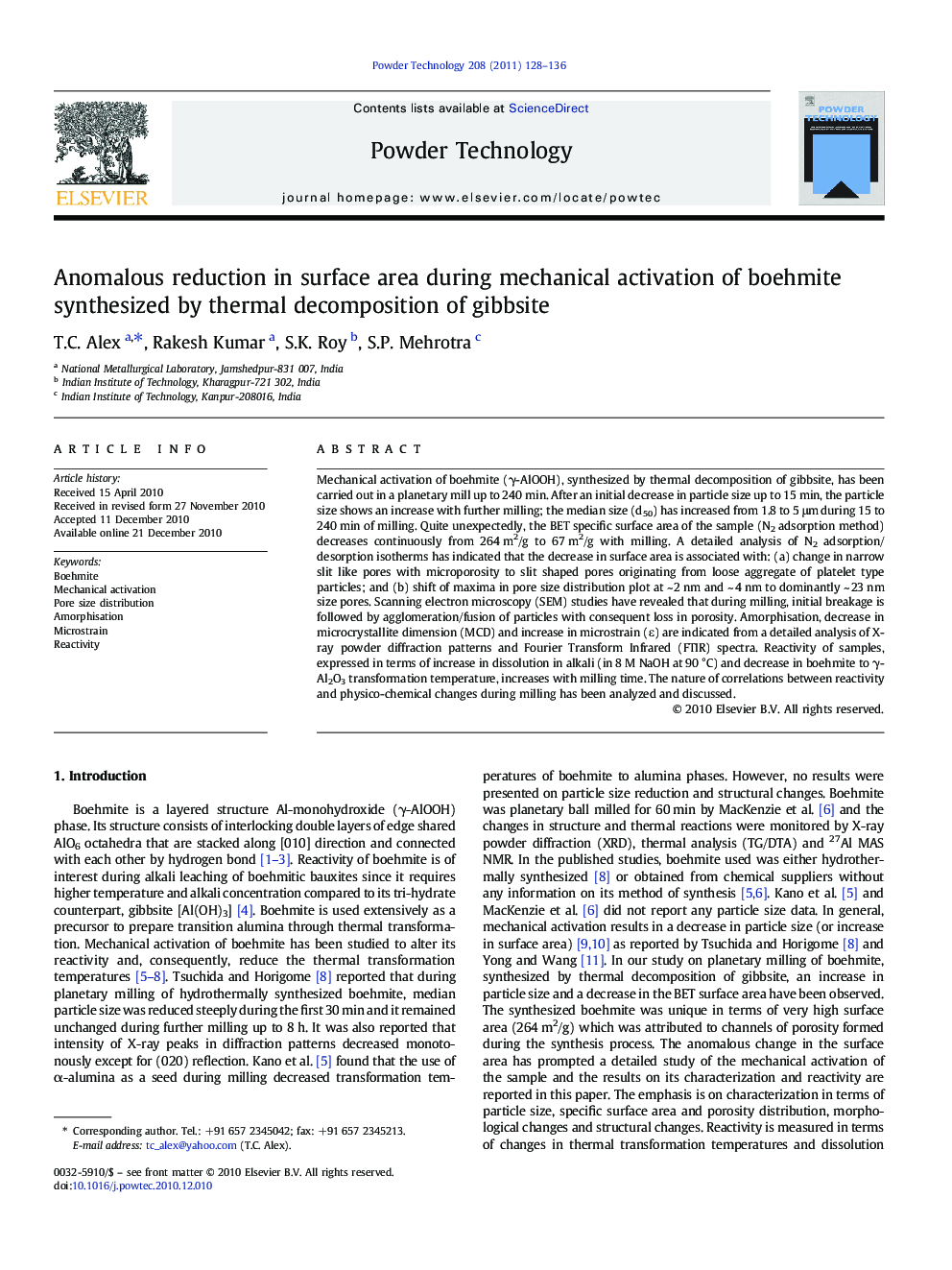| کد مقاله | کد نشریه | سال انتشار | مقاله انگلیسی | نسخه تمام متن |
|---|---|---|---|---|
| 237933 | 465732 | 2011 | 9 صفحه PDF | دانلود رایگان |

Mechanical activation of boehmite (γ-AlOOH), synthesized by thermal decomposition of gibbsite, has been carried out in a planetary mill up to 240 min. After an initial decrease in particle size up to 15 min, the particle size shows an increase with further milling; the median size (d50) has increased from 1.8 to 5 μm during 15 to 240 min of milling. Quite unexpectedly, the BET specific surface area of the sample (N2 adsorption method) decreases continuously from 264 m2/g to 67 m2/g with milling. A detailed analysis of N2 adsorption/desorption isotherms has indicated that the decrease in surface area is associated with: (a) change in narrow slit like pores with microporosity to slit shaped pores originating from loose aggregate of platelet type particles; and (b) shift of maxima in pore size distribution plot at ~ 2 nm and ~ 4 nm to dominantly ~ 23 nm size pores. Scanning electron microscopy (SEM) studies have revealed that during milling, initial breakage is followed by agglomeration/fusion of particles with consequent loss in porosity. Amorphisation, decrease in microcrystallite dimension (MCD) and increase in microstrain (ε) are indicated from a detailed analysis of X-ray powder diffraction patterns and Fourier Transform Infrared (FTIR) spectra. Reactivity of samples, expressed in terms of increase in dissolution in alkali (in 8 M NaOH at 90 °C) and decrease in boehmite to γ-Al2O3 transformation temperature, increases with milling time. The nature of correlations between reactivity and physico-chemical changes during milling has been analyzed and discussed.
Graphical AbstractThe specific surface area of boehmite synthesized by thermal decomposition of gibbsite has been observed to decrease with mechanical activation as a result of aggregation/fusion of particles and changes in pore structure. However, the reactivity of samples increased and has been attributed to pore size modification and generation of increased high energy regions resulting from the decreasing microcrystallite dimension and increasing microstrain.Figure optionsDownload as PowerPoint slideResearch Highlights
► Planetary milling of boehmite synthesised by thermal decomposition of gibbsite.
► BET surface area of the boehmite sample anomalously decreased with milling time.
► Particle aggregation and changes in nature of pore structure caused the decrease.
► Structural changes: decrease in microcrystallite size and increase in microstrain.
► Energy stored during milling enhanced the reactivity despite surface area decrease.
Journal: Powder Technology - Volume 208, Issue 1, 10 March 2011, Pages 128–136